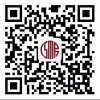Zhang, J., Wang, Y., Wanta, W., Zheng, Q., &Wang, X.* (2022).Reactions to geographic data visualization of infectious disease outbreaks: an experiment on the effectiveness of data presentation format and past occurrence information. Public Health, 202(2022): 106-112.(SSCIQ1,IF: 4.984)
Zhang, J., Wang, Y., Shi, M., &Wang, X.* (2021).Factors driving the popularity and virality of COVID-19 vaccine discourse on Twitter: Text mining and data visualization study, JMIR Public Health and Surveillance, 7(12). (SSCIQ1, IF: 14.56)
Wang, X.*, Xiong, Y., & Zhao W. (2020).Tobacco Control Challenges in China: Big Data Analysis of Online Tobacco Marketing Information. Special issue: Medicine, Humanity and Media. International Journal of Nursing Science, 7 (2s): 52-60.
Han, G., &Wang, X. (2015). From Product-Country Image to National Image: “Made In China” and Integrated Valence Framing Effects,International Journal of Strategic Communication, 9 (1), 62-77. (Two authors make equal contribution.)
Han, G., &Wang, X. (2014). Framing ‘Made in China’ in U.S. newspapers: The evolution of product-country image, 1979-2008.Newspaper Research Journal, 35 (2), 6-23. (Two authors make equal contribution.)
Li, C., &Wang, X. (2013). The power of eWOM: A re-examination of online student evaluations of their professors. Computers in Human Behavior, 29, 1350-1357. (SSCI&SCIQ2, IF: 8.957)
Zhang, Di; Shoemaker, Pamela J;Wang, Xiuli (2013).Reality and newsworthiness: Press coverage of International Terrorism by China and the United States, Asian Journal of Communication, 23(5): 449-471. (SSCIQ3, IF: 2.074)
Han, G., &Wang, X. (2012). Understanding “Made in China”: Valence framing and product-country image,Journalism & Mass Communication Quarterly,89 (2) , 225-243. (Two authors make equal contribution.)(SSCIQ2, IF: 3.431)
Wang, X., & Shoemaker, P. J. (2012). Winning American Hearts and Minds: Country Characteristics, Public Relations and Mass Media,《国际新闻界》, 34 (10) , 108-122. (CSSCI, IF:3.97)
Wang, X., & Shoemaker, P. J. (2011). What Shapes Americans’ opinion of China? Country Characteristics, Public Relations and Mass Media,Chinese Journal of Communication, 4 (1), pp. 1-20. (SSCIQ2, IF: 3.698)
王秀丽、罗龙翔、王兵.智能音箱的使用风险及其社会治理启示.《北京航空航天大学学报(社科版)》,2022年第1期. (CSSCI扩展版,IF:1.527)
熊颖、王秀丽*.新冠疫情新闻中的残疾人:基于媒介再现的视角,《残疾人研究》,2021年第4期. (CSSCI扩展版,IF: 1.673)
熊颖、王秀丽.精准控烟:中国互联网烟草营销的话语分析与治理策略,《全球传媒学刊》,2021年4月刊. (CSSCI扩展版,IF: 2.114)
罗龙翔、王兵、王秀丽*.功能、关系与哲学:人机传播视域下用户与智能音箱的互动研究,《全球传媒学刊》,2021年6月刊. (CSSCI扩展版,IF: 2.114)
王秀丽、罗龙翔、赵雯雯.中国健康传播的研究对象、学科建设与方法:基于范式建构理论的内容分析(2009-2018),《全球传媒学刊》,2019年第3期. (CSSCI扩展版,IF: 2.114)
王秀丽、赵雯雯、袁天添.《社会化媒体效果测量与评估指标研究综述》,《国际新闻界》,2017年第4期. (CSSCI,IF:3.970)
王秀丽.网络社区意见领袖影响机制研究——以社会化问答社区“知乎”为例,《国际新闻界》,2014年第10期. (CSSCI,IF:3.970)
王秀丽、韩纲、Pamela J. Shoemaker.《新闻调查》1996-2005:一种框架分析,《国际新闻界》,2011年第12期. (CSSCI,IF:3.970)
王秀丽、贾哲敏.全球体育赛事与国家形象塑造,《中国地质大学学报(社会科学版)》,2011年第2期. (CSSCI,IF: 3.989)
王秀丽、韩纲. “中国制造”与国家形象传播:美国主流媒体报道30年内容分析,《国际新闻界》,2010年第9期. (CSSCI,IF:3.970)
王秀丽、李聪.网络口碑对高等教育的影响——从两种心理学理论进行解析,《北京大学教育评论》,2009年第4期. (CSSCI,IF: 2.036)





